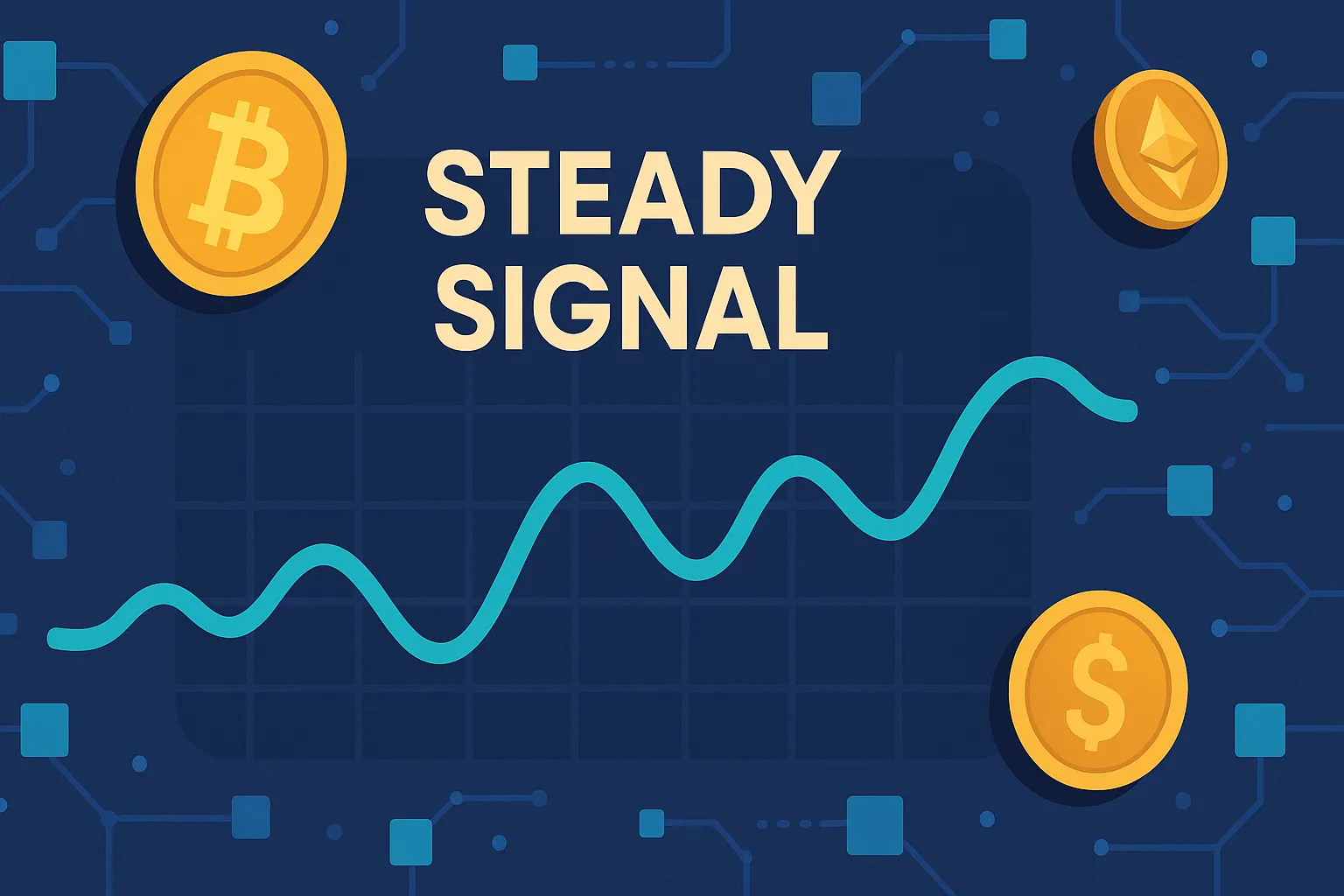Steady Signal: Crypto Trend Analysis & Trading Tips
Steady Signal: Crypto Trend Analysis & Trading Tips
A solid signal in the cryptocurrency market is a steady, reliable on-chain or market signal that helps traders and analysts distinguish genuine trends from fleeting noise. Unlike volatile spikes or spontaneous dumps, steady signals persist over time—resembling sustained buying pressure, symmetrical trades flows, or long-term network usage. Being able to detect and react to these steady signals can be the difference between making money off a long-term uptrend and falling victim to a false breakout.
Table of Contents
- What Is a Steady Signal in Crypto?
- Why Steady Signals Matter
- How to Identify Steady Signals
- Using Steady Signals in Your Trading Strategy
- Tools and Platforms for Tracking Steady Signals
- Case Study: Spotting Whale Accumulation
- Best Practices and Pitfalls to Avoid
- Conclusion
- Frequently Asked Questions
What Is a Steady Signal in Crypto?
A stable signal is a consistent trend of significant indicators—such as trading volume, active addresses, or network fees—that is consistently high (or low) for a while (hours to days), rather than spiking for minutes only. Some examples are:
- Consistent Volume Expansion: A token buying and selling steadily above its 30-day average volume for several consecutive days.
- Sustained Flow to Exchanges: Ongoing transfer of tokens to major exchanges with ongoing high over many sessions.
- Consistent On-Chain Activity: Transaction volumes or active addresses increasing steadily, not just in a single peak.
Why Steady Signals Matter
- Elimination of Noise
Crypto markets are highly volatile. Consistent signals enable you to ignore one-off events and seek meaningful trends. - Better Timing
Entry or exit of position based on persistent momentum reduces the likelihood of false breakouts or head-fakes. - Alert Risk Management
A steady sustained signal can trigger trailing stops or step-scaling, which improves your risk-to-reward. - Validate Strategy
Combining steady signals with other market indicators (e.g., moving averages, RSI) makes your setups more reliable.
How to Identify Steady Signals
- Set Baseline Thresholds
Calculate moving averages (7-day, 14-day) for volume or active addresses. Look for readings consistently above threshold. - Apply Smoothing Techniques
Use exponential moving averages (EMA) or Bollinger Bands to filter out small fluctuations. - Monitor Multiple Metrics
Cross-reference volume with on-chain action and social sentiment to confirm the strength of a trend. - Visual Backtesting
Plot the historical data and see if such consistent periods triggered significant price moves—this hones pattern recognition.
Using Steady Signals in Your Trading Strategy
- Breakout Confirmation
Rather than buying the breakout first impression, wait for a steady accumulation of volume or network activity to validate the move. - Trend-Following Entries
Enter positions when a consistent signal continues within a specified window (e.g., three consecutive daily closes above average volume). - Scaling In/Out
Use consistent signals to scale into winners: the better the signal, the bigger your position should be. - Stop-Loss Placement
Place stops below the beginning of the consistent-signal period—if the signal fails, your risk is limited.
Tools and Platforms for Tracking Steady Signals
| Tool | Key Feature |
|---|---|
| Glassnode | On-chain volume and active address alerts |
| TradingView | Customizable volume and EMA scripts |
| CryptoQuant | Exchange flow dashboards and signals |
| Dune Analytics | Custom SQL dashboards for bespoke metrics |
Case Study: Spotting Whale Accumulation
In Q1 2025, analysts observed Ethereum exchange outflows slowing for five consecutive days as price stabilized at $3,200. On-chain data showed:
- Exchange withdrawals were 15% more than deposits per day.
- Active address increased 10% over 14-day average.
- Social sentiment was neutral, indicating no mania driven by retail.
This steady signal came before a 20% two-week advance, illustrating how sustained net outflows and steady network activity can portend meaningful action.
Best Practices and Pitfalls to Avoid
- Do:
- Combine steady signals with price action and risk metrics.
- Backtest your criteria on multiple assets and timeframes.
- Adjust thresholds dynamically based on market volatility.
- Don’t:
- Chase every signal—focus on high-quality, multi-metric confirmations.
- Overfit thresholds to past data without accounting for changing market regimes.
- Ignore on-chain context; volume alone can be misleading if exchange-specific.
Conclusion
Mastering steady signals provides you with a commanding edge: the ability to filter noise, validate breakouts, and risk-distribute smarter. By defining clear thresholds, applying the right tools, and incorporating these signals into a more holistic trading strategy, you’ll tap into persistent market currents—and leave fleeting volatility behind. Start by building your steady-signal dashboard today, and let the facts guide the way.
Frequently Asked Questions
How does one distinguish a stable signal from a transient spike?
A stable signal is days-long or hours-long—typically monitored by multi-day moving averages or sustained on-chain data—whereas spikes are fleeting bursts that typically reverse themselves quickly.
Which on-chain metric is the best for detecting stable signals?
Though volume is a solid starting point, an exchange flow-based data, active address levels, and network fees provide a stronger signal of a stable trend.
Can you use stable signals for short-term scalping?
They’re more suitable for swing and position trading. For intraday scalping, you may require faster indicators (e.g., 1-hour spiking volume) in addition to stable-signal concepts.




